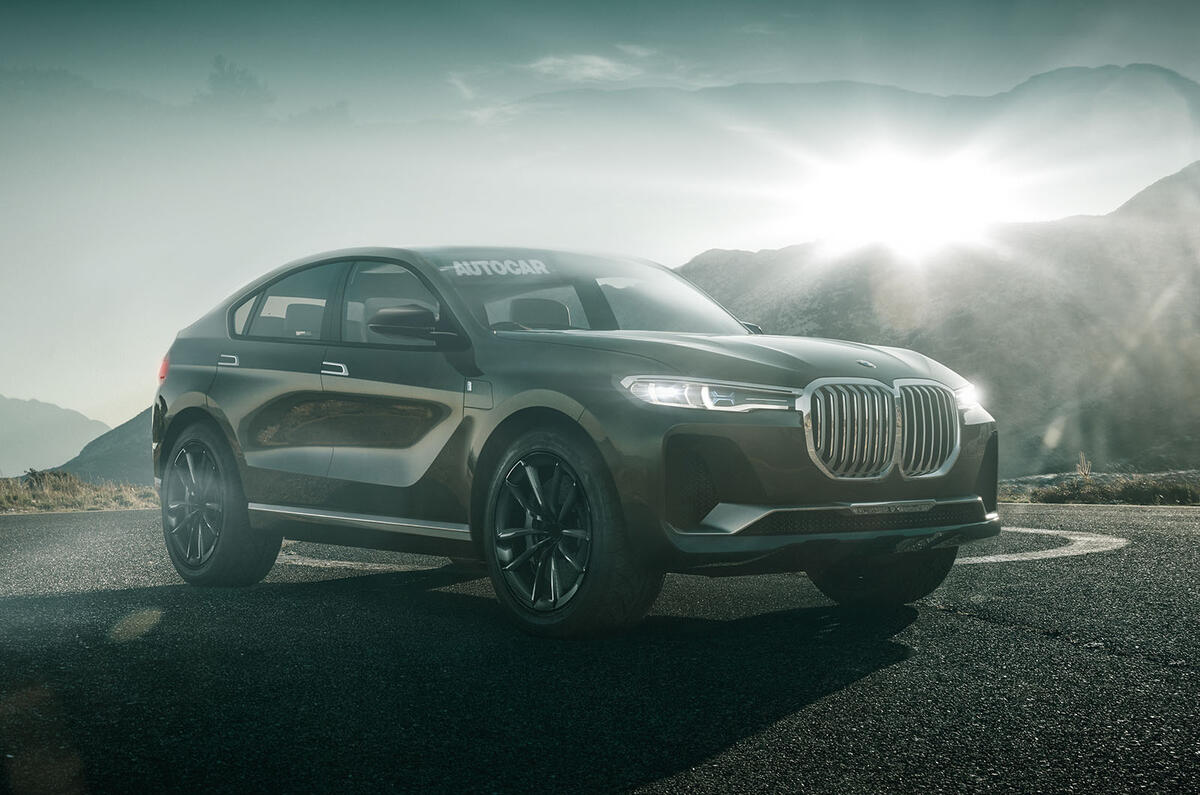The BMW X8 SUV is likely to be the brand’s highest-priced model when it is launched around 2020.
It will be pitched as a coupé-styled rival to the Range Rover and upcoming Audi Q8 and could compete in fully loaded guise against low-end versions of the Bentley Bentayga, Lamborghini Urus and Rolls-Royce Cullinan.
BMW’s head of development, Klaus Fröhlich, wouldn’t confirm plans to push BMW into an even higher price segment with the X8, but he did say such a car was under evaluation and the idea of it held strong appeal.
“The sector is growing fast, so there will be opportunity,” said Fröhlich. “It is early to talk about X8, but one of the first decisions I made when I worked on product strategy was to take the X5 and make the X6.
Everyone said it was not necessary, but it worked. Now we have the X2, X4 and X6. They are emotional and sporty derivatives that work for us.
“There is room for X8 – especially in markets like China – but there are no decisions yet. Each car must have a distinct character, and these are the sort of areas that take time to evaluate.”
Discussions are believed to centre on the platform structure the X8 would need and whether it should be a coupé version of the X7, which was revealed at the Frankfurt motor show and goes on sale in the middle of 2018, or a long- wheelbase version of that car, which would free up additional rear space and allow for a sweeping roofline.
Either way, the X8 is likely to have the option of four or five seats across two rows, rather than the X7’s seven seats in three rows. As such, the emphasis will be on delivering luxurious rear-seat travel, with the materials and finishes chosen to further that goal, rather than being focused on outright practicality.
While the latter idea is said to be favoured by many, it potentially adds complexity to the project as it may require the car to be built on a hybrid mix of BMW’s CLAR modular platform, which underpins the firm’s other X models, and the Cullinan’s new aluminium structure in order to achieve rigidity without adding too much weight or cost.
The decision on how sweeping to make the roofline is said to hinge around the need for the rear seats to be commodious, given that the X8 is likely to be chauffeur driven for many owners, and how much differentiation is required to give the car a unique character from the X7. Achieving coherent styling of the sweeping roofline without bringing down the roof height ahead of the boot line will inevitably be problematic.
The X7’s dimensions in comparison to rivals suggest there is room for a longer version in the line- up. It is 5020mm long with a wheelbase of 3010mm, while the Mercedes-Benz GLS is 5131mm long and has a wheelbase of 3076mm.
A Range Rover is 4999mm long and has a wheelbase of 2922mm in standard form. Power is likely to come from the same powertrains as for the X7, although the sales focus in China, Russia and the Middle East may mean that initial offerings are confined to higher-powered petrol or plug-in petrol-electric hybrid drivelines. Given those target markets, the possibility of a V12-engined X8, powered by the 592bhp, 590lb ft 6.6-litre unit that is found in the 7 Series, is highly likely.
The petrol-electric hybrid powertrain is believed to be derived from the same set-up as that used by the 740e xDrive iPerformance, with a turbocharged 2.0-litre four-cylinder engine operating in combination with an electric motor in the forward section of the gearbox housing, albeit with a larger-capacity battery to give a 62-mile electric range.

